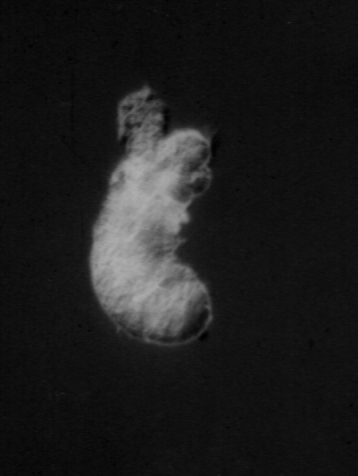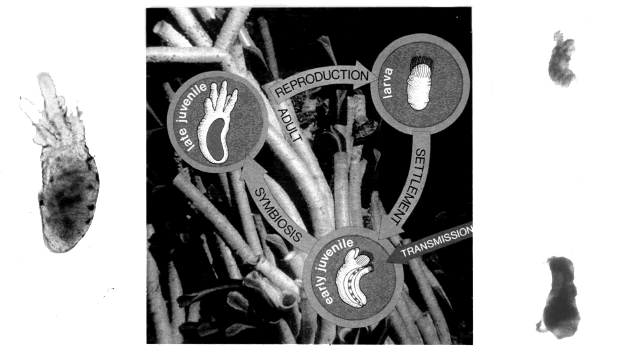Reproduction
Riftia pachyptila is dioecious; the male and female organs are housed in seperate and in this case not so distinct individuals. There is a single external difference between males and females; that is, paired anterior ciliated groves and ridges, associated with the genital apertures of the males are lacking in females(4).The reproduction biology of Riftia continues to be the subject of considerable debate. Although apparent spawning events have been observed, direct sperm transfer and internal fertilization seem to be the main means of fertilization among vestimentiferans(4). Male worms release spermatozoa as bundles that eventually disintegrate in seawater, the sperm are capable of swimming(4). Eggs just in side the female genital aperture are at the germinal vesicle stage* and are about 78µm in diameter. Sperm from just inside the male aperture have elongate, corkscrew-shaped bodies about 9µm long and 0.6µm in diameter. The tails are about 9µm in length. No spermatophores have been observed.
At in situ temperatures and pressures ( 2°C and 250 atm ), it has been estimated that the metabolic lifespan for the larva of Riftia averages about 38 days. In the measured flow regime at a fast spreading ridge axis this lifespan results in potential along-ridge dispersal distances that rarely exceed 100km(5).
Riftia pachyptila larva

Picture courtesy of www.science.psu.edu - Dr. Charles Fisher
Unlike most inverebrates, Riftia's life cycle is triphasic; meaning it's
has three stages instead of the more common two phased biphasic cylce. The
biphasic cycles usually consist of a motile larval stage and an adult non-mobile
stage, where as Riftia's triphasic life cycle consists of larval, early
juvenile, and late juvenile / adult stages.(6)

Picture courtesy of www.hydrothermalvent.com - Dr. Monika Bright, University of Vienna, Austria
|
*The
nucleus of a
primary
oocyte, the
development of which is
suspended in
prophase I of the
first meiotic division between
embryohood and
sexual
maturity.
|